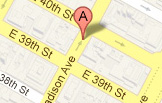Business Bankruptcy
A business bankruptcy is most often a voluntary legal proceeding filed by a financially troubled company seeking protection from its creditors. Two types are available - a Chapter 11 filing brought to financially reorganize or restructure the business, and a Chapter 7 filing seeking to liquidate the business. On April 20, 2005, President Bush signed into law the Bankruptcy Abuse Prevention and Consumer Protection Act of 2005 ("BAPCPA"). BAPCPA made significant changes to the bankruptcy code.
Bankruptcy can indeed be a valuable tool for a financially troubled company. Yet the expense, operation and administration of even a modest Chapter 11 case can be daunting for a small or medium size business with just a few creditors. Other options should therefore be investigated. Debt relief may sometimes be accomplished through negotiating extended payment arrangements with particular creditors or through assignments for the benefit of creditors, composition agreements or litigated or non-judicial workouts. If you believe your business is financially troubled and might benefit from creditor protection, it would be wise to seek legal advice from an attorney experienced in debtor/creditor rights matters and bankruptcy at the earliest possible time.
Business bankruptcy often involves crisis management. Exigent circumstances create many challenges and choices, very often requiring immediate decisions and nerves of steel. For this reason, management should obtain professional guidance and counsel.
A Chapter 11 filing typically permits management and owners of a financially distressed business to continue operating the business under the protection of the bankruptcy court without outside interference from creditors. Immediate attention must often be given to retention of professionals, continuation of banking relationships and availability of credit, as well as resolving prepetition payroll issues. In addition, after notice and a hearing, the bankruptcy court may allow the debtor to sell off unprofitable assets or reject burdensome leases, and other steps may be pursued to control costs.
The debtor is generally given 120 days to file a plan of reorganization for creditor consideration and vote. The debtor normally uses this time to negotiate the plan of reorganization with its secured and unsecured creditors. The plan of reorganization most often provides for partial payment of unsecured debts over time. Creditors or other parties may file competing plans. A Chapter 11 filing works well for a business behind in its unsecured debt payments, with some cash on hand and a regular cash flow. In theory, given enough breathing room and sufficient opportunity to operate without worrying about paying old bills the debtor hopes it will be in a position to reorganize its financial affairs through the confirmation of a Chapter 11 plan. Its prospects will be enhanced by projections of future profitability or the identification of an investor or evidence that the debtor can realize on its going concern value.
The purpose of a Chapter 7 bankruptcy, on the other hand, is to liquidate the business debtor's assets. Upon the filing of a Chapter 7 bankruptcy a trustee is appointed to take charge of the debtor's business. The trustee may continue to operate the business for a short time or, more typically, take steps to close the doors and immediately collect, market and sell off the assets. The trustee's job includes the collection of all real and personal property, including cash, accounts receivable, pending lawsuits, sale proceeds, inventory, valuable leases, and rights of action, including voidable preferences and fraudulent conveyances.
If you would like more information concerning business bankruptcy and its alternatives, please contact the firm via e-mail or by calling 212.684.7800 or 201.794.7500.
New York Office
Phone: 212.684.7800
New Jersey Office
Phone: 201.794.7500
For further information on this topic or to discuss your case, please contact Richard E. Weltman or Michael L. Moskowitz by telephone, fax or email.
- Eastern District of New York Bankruptcy Judge Opts Out of Loss Mitigation Program
- Weltman & Moskowitz Attorneys Named Super Lawyers for 2021
- New Amendments to Bankruptcy Rules Effective December 1, 2020
- Chapter 11 Update: Jay Alix Protocol Found Unnecessary and Detrimental to Bankruptcy Transparency
- Chapter 11 Debtor Successfully Defeats Pension Fund’s Attempted Dismissal of Case Under Direction of Skilled NY Bankruptcy Law Team
- Commencement of a Chapter 11 Case to Obtain Extension of a Real Estate Closing Date May Not Constitute a Bad Faith Filing
- Lender Alert: Bankruptcy Court Substantially Reduces Post-Petition Fees as Excessive
- Bankruptcy Litigants Beware: Stay Violations Come in all Shapes and Sizes
- Beat the Clock: Sears Has Filed Bankruptcy and It's Time to Take Action
- District Court Finds Debtor’s Leased - but Unused Property - Qualifies as an Administrative Expense Claim
- Third Circuit Holds That Vendor Must Have Physical Possession of Goods For Administrative Expense Priority Claim Pursuant to Section 503(b)(9) of the Bankruptcy Code
- Weltman & Moskowitz Forms Strategic Alliance with Chuhak & Tecson
- Weltman & Moskowitz Attorneys Named Super Lawyers for 2017
- Welcome to the Weltman & Moskowitz Team, Melissa!
- Weltman & Moskowitz Founding Partners Named Super Lawyers for 2016
- Madoff Update: Mere Suspicion of Fraud Not Enough to Extend Trustee “Claw-Back” to Six Years
- RECENT SUCCESS STORY: Zealous Advocacy Secures Payment in Full for Client in A&P Chapter 11 Cases
- Best Practices Alert: Obtain Court Order When Extending Bankruptcy Deadlines
- 2015 Mid-Year Review of Supreme Court Bankruptcy Decisions: Part 4
- 2015 Mid-Year Review of Supreme Court Bankruptcy Decisions: Part 3
- 2015 Mid-Year Review of Supreme Court Bankruptcy Decisions: Part 2
- Most Recent Success Story: Tenacity and Preparation Save Creditor’s Late Claim
- Weltman & Moskowitz Forms Strategic Alliance with Saiber, LLC
- Success Stories: 2 Bankruptcy Adversary Proceedings Withdrawn Early, Saving Time & Resources - Part 2
- NY Appellate Division Sets Boundaries on Mandatory Foreclosure Conferences Held Pursuant to NY CPLR §3408
- More Judicial Oversight to Expedite NY’s Mandatory Foreclosure Conferences
- Bankruptcy Fees Rise as of June 1
- BAPCPA: Monumental Failure or Work in Process?
- Understanding Reaffirmation Agreements
- Upcoming Event: January 29, 2014 - Partner Michael Moskowitz Speaks on Consumer & Corporate Bankruptcy Issues
- Loss Mitigation: How Borrower Bankruptcies Impact Lenders
- ALERT – Judicial Committees Publish Proposed Amendments to Bankruptcy Procedures and Forms
- OUT-OF-COURT WORKOUT OR CHAPTER 11?
- CREDIT UNION LENDER MUST IMMEDIATELY RETURN TO DEBTOR REPOSSESSED VEHICLE UPON NOTICE OF BANKRUPTCY FILING
- New Website! PaperStreet launches weltmosk.com re-design!
- ATTORNEY RICHARD WELTMAN RECOGNIZED FOR OUTSTANDING SERVICE BY NEW JERSEY'S FEDERAL BANKRUPTCY COURTS.
- PENTAGON FCU SUCCESSFULLY OPPOSES DEBTOR'S EFFORTS TO "LIEN STRIP" ITS SECOND MORTGAGE IN NY BANKRUPTCY COURT.
- Protecting Consignment Sales From Retailer Bankruptcies: Are Your Goods and Receivables at Risk?
- MICHAEL L. MOSKOWITZ TEACHES COURSE CONCERNING IMPACT OF BANKRUPTCY REFORM ON CONSUMERS TO DELOITTE, LLP STAFF MEMBERS
- RICHARD WELTMAN TEACHES COURSE TO ESTATE PLANNERS ON IMPACT OF BANKRUPTCY REFORM
- Collect with Confidence: 12 ways to get paid when Key Customer or Supplier Files (or Threatens) Bankruptcy
- RICHARD WELTMAN QUOTED IN RECENT ARTICLE ON BANKRUPTCY TRENDS IN NEW JERSEY LAWYER
- RICHARD WELTMAN AND MICHAEL MOSKOWITZ TEACH BANKRUPTCY REFORM TO NEW YORK STATE SOCIETY OF CERTIFIED PUBLIC ACCOUNTANTS
- CONGRESS PASSES MAJOR BANKRUPTCY REFORM BILL AND DELIVERS BILL TO PRESIDENT BUSH FOR SIGNATURE






